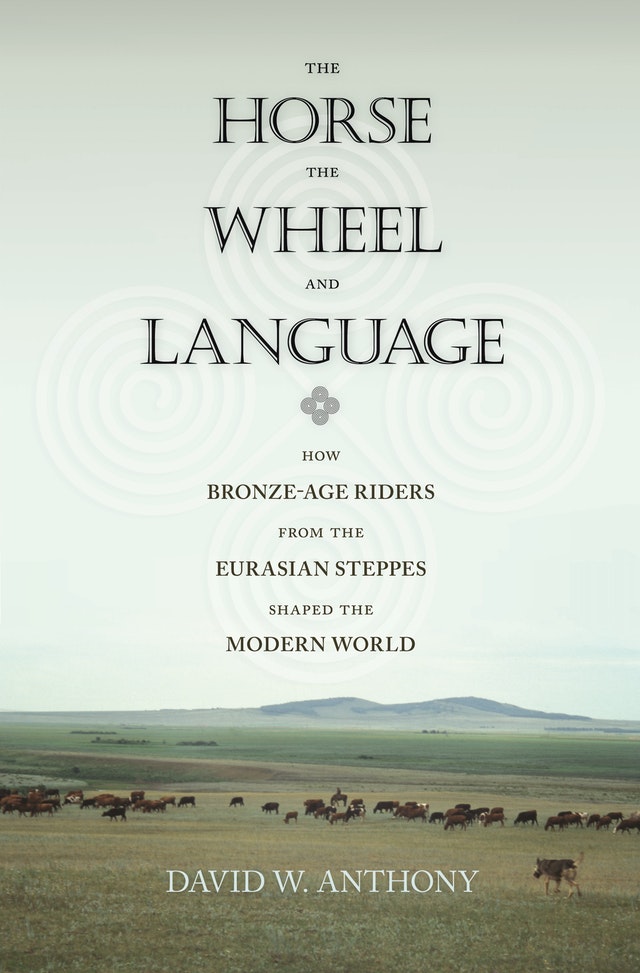The Horse, the Wheel, and Language
 The problem with getting an idea of the origins of civilization is that no one that far back had yet started writing anything down. But, there are still clues we can gather in the absence of records. David Anthony tries to tie the main two together here.
The problem with getting an idea of the origins of civilization is that no one that far back had yet started writing anything down. But, there are still clues we can gather in the absence of records. David Anthony tries to tie the main two together here.
He notes that there’s a lot of professional resistance to trying to tie historical linguistics to the physical artifacts found by archaeology. One problem he notes is the two disciplines use very different jargons, and both are specialized enough that there’s no one who’s fully qualified in both fields. Anthony himself is an archaeologist and admits his deficiencies, but from my passing knowledge of the subject, he seems well read enough on Proto-Indo-European to say intelligent things. What he has to say certainly seems intelligent to me.
The first part of the book sets the scene by going through the basics of why people think there was an actual Proto-Indo-European language, and what we can deduce from that small part of it we can reconstruct. He also tackles some limitations that I had not seen discussed before, which was nice. And then the general archaeology targeted in the likely time and region, finishing with work on trying to set bounds on the likely time period PIE existed in. He he gets into arsenical bronze, which I had not known of before (bronze made of copper and naturally co-ocurring arsenic). Also, the intellectual history of ordering prehistory ‘ages’, which I suppose I must have seen before at some point, but I had forgotten it all.
One point he goes into some different terminology used in Soviet, and now post-Soviet studies, though I wish he’d gone a little further with it. Naturally, the main part of the book has a lot of more detailed looks at the archaeological record in it. It can get a bit much on the minutiae, and certainly trying to digest all the archaeology of a broad area of land and time means things sort of fly by.
He and his wife have also done work on trying to figure out just when and where the horse was domesticated. There’s some limits to what they’re doing, but it’s a much better study of the subject than we’ve had before.
In the end, this is guesswork. However, its very well thought out guesswork based on what we do know. If you’re interested in early history, if you wonder just how one language group came to dominate much of the planet, this is a very interesting book. I do think he’s on the right track, and is as good of a guess as we’re going to have until continuing archaeological discoveries can say more.

Discussion ¬